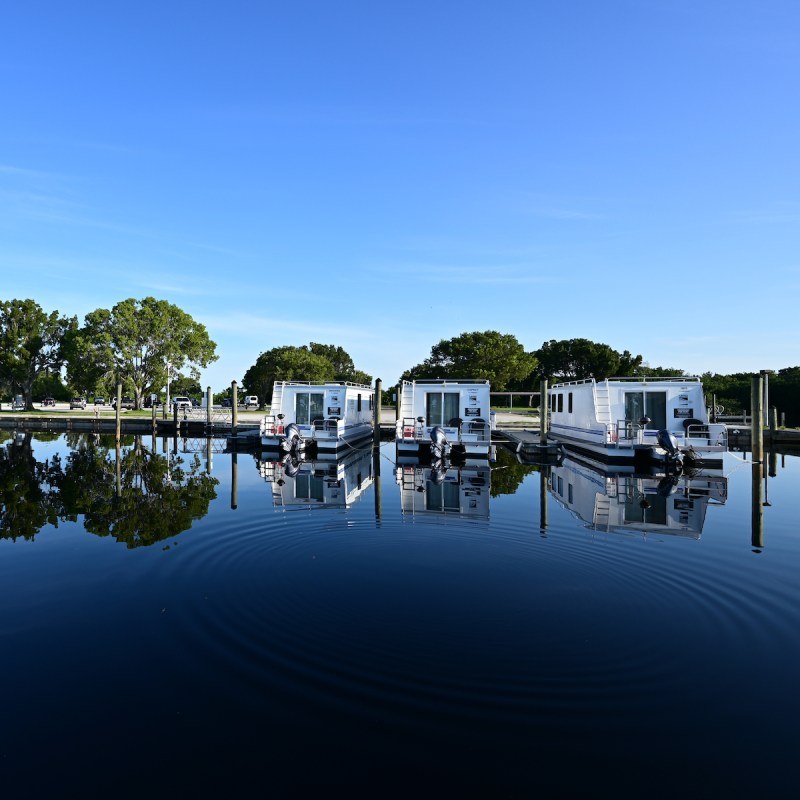
(Francisco Blanco / Shutterstock.com)
Everglades National Park covers 1.5 million acres in southern Florida. Over one million people visit the third-largest national park in the United States each year, home to one of the most extensive wetlands in the world. The Everglades National Park, established in 1947, has nine different habitats including marine and freshwater sloughs. The water from the Kissimmee River, Lake Okeechobee, and the Shark River flow to the west through the Big Cypress National Preserve into the Ten Thousand Islands. It also heads to the east into Biscayne National Park and south draining into Florida Bay.
Videos by TravelAwaits
After the 1800s, settlers arrived to farm. These new arrivals needed the land to dry up and didn’t understand that “The River of Grass” was so much more than a worthless swamp. They didn’t realize the importance of the vast maze of channels and low-lying areas that supplied food and homes to the birds, fish, reptiles, flora, and fauna. According to the National Park Service, “Dams, floodgates, canals, levees and roads were built, diverting precious water from natural wetlands.”
Years after the Everglades became a national park, a series of projects were implemented to protect the biodiversity of this ecologically sensitive area. It’s the largest subtropical wilderness in the United States, an International Biosphere Reserve, a World Heritage Site, and a Wetland of International Importance. Water is essential here.
There are many ways to explore the park — one great place to start is the Ernest F. Coe Visitor Center in Homestead, Florida. The visitor center is about a 2-hour drive from Miami. The Flamingo Marina is 38 miles past the Ernest F. Coe Visitor Center and offers incredible ways to experience the park’s beauty from the water.
You can rent a canoe or kayak, take a narrated boat tour, or rent a houseboat at Flamingo Adventures at the Flamingo Marina. Flamingo Adventures At Everglades National Park is the only place where you can rent and stay in a houseboat in the United States. If you’d like to spend a vacation on a houseboat in the Everglades, here are 10 tips (in no specific order) to enjoy the experience while observing this watery, wondrous world.
Note: I was a guest of Flamingo Adventures At Everglades National Park on a houseboat, and all opinions are mine. Due to water conditions, we couldn’t drive the houseboat out to Whitewater Bay, but the following tips remain relevant.
1. Take A Boating Course Specific To The Everglades
My husband and I wanted this water camping experience. Before renting a houseboat through Flamingo Adventures at Everglades National Park, we read the requirements. We were confused about the course needed and took a complete boating course from Boat US, a free powerboat certification program. I’m glad we took the time to learn about boating in my state, but it wasn’t the correct course for the Everglades.
When we arrived that afternoon, the water level was high due to recent rainfall. It prevented us from floating under a road — an overpass that spanned across the Buttonwood Canal — so we used the afternoon to explore more of the park. We took the required Everglades boating course and passed the class that evening. We learned about the fragile habitat, the creatures, and the dangers of running aground in the shallow water of the Everglades.
Afterward, we felt prepared to drive the Houseboat. A certified captain at the marina, Chris Taylor, would back our boat out and drive up the man-made Buttonwood Canal into Coots Bay. Then he would leave our boat and hop on a chase boat, leaving us alone to navigate our way into Whitewater Bay. The return trip would be repeated a few days later.

(Photo Credit: Jeanine Consoli)
2. Utilize The Everglades National Park Map
There is so much to see on the water. But, if you have time to explore on foot, you should. In that case, a map of the Everglades is a valuable resource for finding incredible hikes both on boardwalks and dirt trails. It’s also a great way to plan out what you’d like to see and what’s closest to where you are staying while in the park.
According to a park ranger, you can complete the park in about 3 hours. You might see wildlife, including American crocodiles and American alligators who co-exist here. It’s the only place on earth where they do.

(Photo Credit: Jeanine Consoli)
3. Pack A Camera
While docked at the Flamingo Marina, we loaded up the boat and then drove our car to some nearby hikes. We went over to Guy Bradley Trail. We observed shorebirds such as piping plovers, herons, and snowy egrets frolicking in shallow water that collects there. Next, we toured the new Eco Tents available to rent through Flamingo Adventures At Everglades National Park.
All the Eco Tents are on raised platforms and have stunning views of Florida Bay. Then we walked along on the raised boardwalk of the Mahogany Hammock Trail. We observed a forest of old-growth mahogany trees on the higher, drier ground called a “hammock.” Owls and air plants thrive here. We loved discovering the enormous trees and stared in awe as the dragonflies’ and butterflies flitted over the grasses.

(Photo Credit: Jeanine Consoli)
4. Prep Your Meals Before Getting On The Boat
If you are used to camping, you know how to prepare for a campout. Here is a pro tip: prep your meals in your own kitchen at home if you’re not a camper. There’s a marina store for supplies, but we planned out our meals, shopped, and chopped ahead of time at home. The kitchen on board is tiny, and even though it’s well-stocked, we didn’t want to fuss with prepping on the boat.
Instead, we wanted to immerse ourselves in the Everglades. We planned easy breakfasts, lunches, and dinners and brought my cast iron skillet. The boat kitchen includes a tiny microwave, small refrigerator, and stove. The grill is outside on the stern (or back of the boat), and every appliance is powered by propane. Decide on a simple menu, and prep as much as possible beforehand.
5. Bring Bug And Sun Protection
We visited in May, but the bugs are fierce and mighty even in January. I packed essential oil bug spray but, on the advice of the Marina Store manager, purchased a 100 percent Deet Bug Repellent while there. I usually use natural products to fight off insects at home, but you need the strong stuff here. Bring sunscreen for your face and exposed body parts. The sun is intense out on the water.

(Photo Credit: Jeanine Consoli)
6. Bring Fishing Gear
Do you have your own fishing gear? If not, the Marina Store has inexpensive bait and tackle for sale. My husband bought a rod, got the fishing license he needed, and loved spending the early evening fishing off the dock at the marina. We observed ospreys just feet from where we were standing. We also planned to fish off the boat once we got underway. My husband caught (and released) a mid-sized grouper, but several tarpon were biting the bait and swimming off.

(Photo Credit: Jeanine Consoli)
7. Pack Wisely
Plan your outdoor outfits wisely, as there is no need to over (or under) pack. There’s a closet on board but not a lot of storage space for clothes. Bring clothing that helps protect from the sun (shirts with SPF), a hat with a brim, sunglasses, shorts, light hiking pants, closed-toe shoes, and a swimsuit for sunning, because you shouldn’t go in the water. The 17-foot American crocodile named Fred likes to hang out by the dock, but we saw a few others like him along Buttonwood Canal.

(Photo Credit: Jeanine Consoli)
8. Bring Hiking Boots
We only brought sneakers rather than boots, which limited where we chose to hike. We stuck to the raised boardwalks, but we would’ve seen more of the park if we wore our hiking boots. We’ll return soon to explore other trails.

(Photo Credit: Jeanine Consoli)
9. Bring An Activity For The Evenings
You may be able to get on the internet at the marina if you have AT&T cell service, but other carriers are spotty here. You may not get any cell service on the water at all. Bring old-fashioned entertainment like playing cards, games, a puzzle, a good book to read, or stargaze and enjoy the sounds of nature when the sun goes down.

(Photo Credit: Jeanine Consoli)
10. Be Flexible
We couldn’t drive the houseboat as the water levels never got low enough for the boat to pass under the overpass on the Buttonwood Canal. According to Captain Chris, a houseboat is slow and doesn’t have much maneuverability. He said it’s a lot like driving a big truck but only at speeds up to 6 miles per hour. It’s different than driving a skiff or smaller boat in terms of speed and visibility.
Instead of driving the houseboat, we drove a small boat ourselves (also at the marina) up Buttonwood Canal and into Coots Bay. We took the 90-minute narrated wildlife tour and saw a pod of 10 manatees swimming together around Coots Bay and Whitewater Bay. We observed more crocodiles and many birds, including a few anhingas drying their wings on the mangrove trees.
Pro Tip: Captain Chris offers these main tips when taking a boat out in the Everglades, “Watch your depths and watch your speed, it’s easy to get stuck, and manatees make their home here.
For more on the Everglades, check out these articles:
